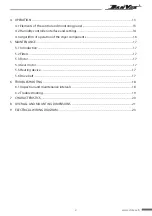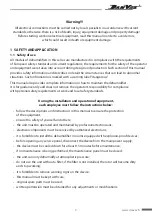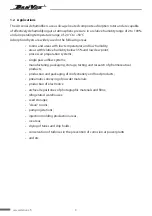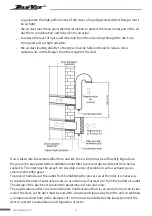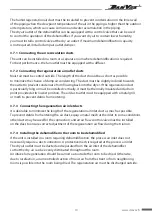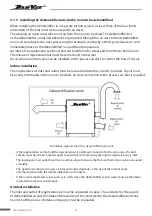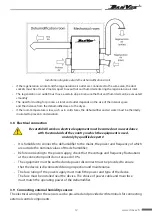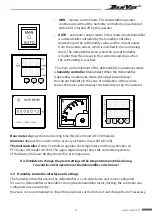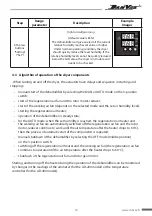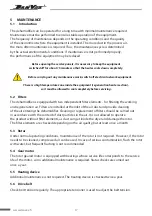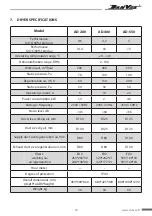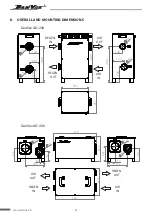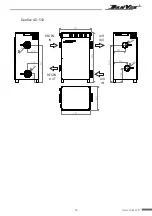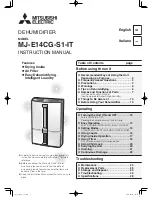
11
www.danvex.fi
3.7.5
Installing the dehumidifier outside the room to be dehumidified
When installing the dehumidifier in a separate technical room, at least three of the four inlets
and outlets of the unit must be connected to air ducts.
The working air ducts must take moist air from the room to be dried. The dehumidified air
at the dehumidifier outlet and before being supplied through the air duct to the dehumidified
room can be subjected to post-processing (for example, cooling by a third- party device) or sent
immediately back to the dehumidified room without preparation.
Air intake for regeneration can be carried out both from the street and from the technical room.
The release of regeneration air must be carried out to the street.
An air volume control valve can be installed on the process air duct to control the flow of dry air.
Indoor installation
The regenerative air inlet and outlet must be located outside the circuit to be dried. Dry air must
be evenly distributed in the room to be dried, no duct connection to the process air inlet is required
.
Installation diagram inside the dehumidification circuit
•
If the regeneration air inlet and the regeneration air outlet are connected to the same area, the duct
sockets must be at least 2 meters apart to avoid hot and humid air entering the regeneration air inlet
.
•
The regeneration air outlet must have a certain slope to ensure that hot and humid air can be evacuated
smoothly.
•
The need for ducting for process air inlet and outlet depends on the size of the interior space
and the distance from the dehumidified area to the dryer.
•
If the room temperature is low, such as in cold stores, the dehumidifier and air water must be thermally
insulated to prevent condensation
Outdoor installation
The inlet and outlet of regenerative air must be separated in space. The air ducts for the supply
of dehumidified air and the intake of dried air must be connected to the dehumidification zone
(room), but the places of intake and supply must be separated
.



